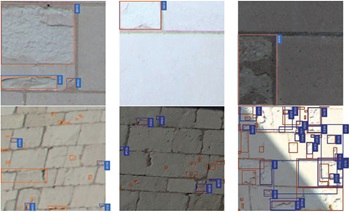Delivering the second road investment strategy RIS2
Contents |
[edit] Introduction
Highways England’s latest plans will support 64,000 construction jobs, delivering over £27 billion of investment during the next five-year road investment strategy. In this blog we look at the commitments and how they match up to changes needed in infrastructure delivery.
[edit] Strategic business plan from Highways England
The Strategic Road Network is the backbone of the road network in England, supporting almost 40 million vehicles annually. Entire sectors and communities depend on it for continued prosperity, meaning that upgrading and maintaining the network is essential.
In August 2020, Highways England published its strategic business plan and delivery plan for the second road investment strategy (RIS2), which covers the period 2020-2025.
[edit] Funding commitments
£27.4 billion has been allocated over the RIS2 period covering 52 schemes, including:
- £14.2 billion for road enhancement schemes.
- £10.8 billion for operations, maintenance and renewal schemes.
- £1.1 billion to improve capability and invest in new technology.
Some of the flagship projects include the Lower Thames Crossing, upgrading the A66 to create the first new Trans-Pennine dual carriageway since 1971, and improving the major direct route between the South East and South West with the Stonehenge Tunnel.
ICE and the Infrastructure Client Group’s COVID-19 White Paper recommended that public procurement and funding models should become more intelligent and outcomes-based, so that communities and businesses get the infrastructure that will deliver them the greatest social, economic and environmental benefits.
Highways England’s delivery plan goes some way to reflect this thinking, with almost £1 billion set aside for projects that will have wider benefits beyond road investment along with commitments to new procurement and delivery models.
The plans themselves were developed before the outbreak of COVID-19. While it is probably fair to assume that demand growth on conventional transport networks will remain significant in the future, if COVID-19 impacts on Highways England’s plans, these will be set out in annual updates.
[edit] Reinventing delivery
The White Paper outlines that the business models for delivering infrastructure will need to change in order to ensure that investment is made efficiently and effectively. More specifically, the tools and approaches to ensure this change happens include the likes of off-site manufacturing, investment in digitalisation, wider adoption of enterprise-based delivery models and outcome-based procurement models.
In its delivery plan, Highways England have committed to embed automated digital design, standardised products and methodologies and off-site manufacturing into infrastructure delivery. Highways England also aims to deliver £2.23 billion of efficiencies during the RIS2 period.
In addition to this, all new smart motorway investment will be delivered through an alliancing model, increasing the potential for stable and repeatable delivery, aligning objectives and outcomes, reducing design costs and minimising construction time.
This includes the use of the Rapid Engineering Model, a digital application that uses data to automatically design an asset, allowing scheme options to be produced and assessed much faster.
[edit] Lessons from RIS1
ICE’s insights paper into lessons learned from the first road investment strategy (RIS1) highlighted that programme led to enhanced collaboration with the supply chain, new methods of procurement and a prioritisation of innovation and technology.
These successes have been continued through into RIS2, with the extension of Regional Delivery Partnerships and the alliancing model for smart motorway projects, as well as the application of lean construction principles on site.
While not specified in its entirety, some of the £936 million ring-fenced for investment outside of roads will be spent on an innovation fund. RIS1 saw £150 million set aside for this purpose, so further details on the fund and the types of innovation it will prioritise for RIS2 are required.
This article originally appeared on ICE's Infrastructure Blog. It was written by David Hawkes, ICE Policy Manager and published on 27 August 2020.
--The Institution of Civil Engineers
[edit] Related articles on Designing Buildings Wiki
- Five years of road investment strategy.
- Highways England.
- ICE articles on Designing Buildings Wiki.
- Infrastructure act.
- Lean construction.
- Rapid Engineering Model REM.
- Road investment strategy.
[edit] External resources
Featured articles and news
CIOB photographic competition final images revealed
Art of Building produces stunning images for another year.
Major overhaul of planning committees proposed by government
Planning decisions set to be fast-tracked to tackle the housing crisis.
Strategic restructure to transform industry competence
EBSSA becomes part of a new industry competence structure.
Industry Competence Steering Group restructure
ICSG transitions to the Industry Competence Committee (ICC) under the Building Safety Regulator (BSR).
Principal Contractor Competency Certification Scheme
CIOB PCCCS competence framework for Principal Contractors.
The CIAT Principal Designer register
Issues explained via a series of FAQs.
Conservation in the age of the fourth (digital) industrial revolution.
Shaping the future of heritage
Embracing the evolution of economic thinking.
Ministers to unleash biggest building boom in half a century
50 major infrastructure projects, 5 billion for housing and 1.5 million homes.
RIBA Principal Designer Practice Note published
With key descriptions, best practice examples and FAQs, with supporting template resources.
Electrical businesses brace for project delays in 2025
BEB survey reveals over half worried about impact of delays.
Accelerating the remediation of buildings with unsafe cladding in England
The government publishes its Remediation Acceleration Plan.
Airtightness in raised access plenum floors
New testing guidance from BSRIA out now.
Picking up the hard hat on site or not
Common factors preventing workers using head protection and how to solve them.
Building trust with customers through endorsed trades
Commitment to quality demonstrated through government endorsed scheme.
New guidance for preparing structural submissions for Gateways 2 and 3
Published by the The Institution of Structural Engineers.
CIOB launches global mental health survey
To address the silent mental health crisis in construction.
Key takeaways from the BSRIA Briefing 2024
Not just waiting for Net Zero, but driving it.



























